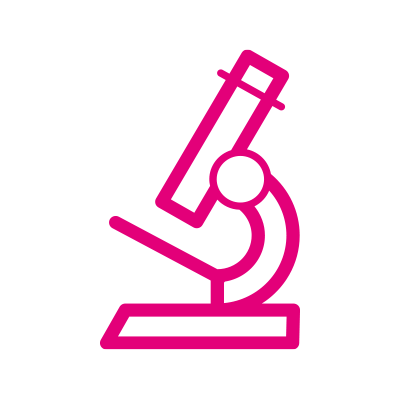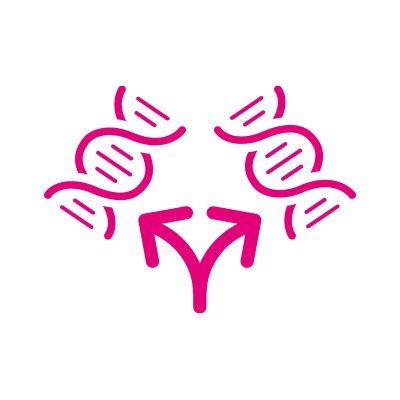DNA´s Hidden Codes
The world’s most complex language system is located within every cell of your body. Now biologists are discovering that DNA is hiding a language within a language.
When I say there are hidden codes in DNA, some people jump to the conclusion that I believe “messages from God” were written in our DNA. Once I was sent an article claiming that researchers had translated Bible verses from DNA, but it was obviously a spoof. That’s not the type of hidden messages I mean.
Scientists are now discovering that our DNA really does have hidden codes that have a practical function and purpose in our cells. It’s like discovering a coded message that means one thing when you read it in English, but if you pull out every third letter, it means something completely different in French. How complicated is that!
We see evidence that DNA was not haphazardly assembled over eons but rather was assembled purposefully by the Creator God.
Children in public schools are bombarded with claims that random processes can explain the messages encoded in DNA, and this creates doubt in the Bible’s claims about the Creator. So we need to keep up with amazing new discoveries like “messages within messages.” They confirm that DNA could never assemble haphazardly by evolution and confirm instead the label “Designer Required.”
Same “Letters,” Multiple Meanings
Genetics can get very complicated very quickly. But everyone needs to grasp the basics because they are so central to defending our faith in this skeptical, scientific age. The easiest way to understand DNA is by a comparison with language.
English uses 26 letters of the Latin alphabet, which can be shuffled to produce hundreds of thousands of words in the English language. French uses these very same letters to produce all the words in that language. Similarly, DNA is composed of four bases symbolized by the letters A, T, C, and G. These “letters” can be arranged into thousands and thousands of different sequences with different meanings, depending on how you read them.
The most familiar purpose of genetic sequences is to provide instructions to make proteins (the building blocks of our bodies, such as collagen in our skin). But these letters can also be used to provide instructions for regulation, packaging, and many other duties in the cell. Until recently, scientists believed that each DNA sequence served just one purpose or the other, but not both. Now, however, scientists are discovering that the same DNA code can be used for both. Cells essentially read the same string of DNA for two kinds of information at once!
Below are two astonishing examples of multipurpose coding, but they appear to be only the tip of the iceberg in DNA’s complexity.
Dual-Usage “Words”
The first multipurpose wonder is not hard to understand if you continue the language analogy. Just as DNA has four “letters,” these letters are combined into three-letter “words,” called codons. These words are combined into sentences and paragraphs that ultimately form complete sets of instructions for making proteins or regulating them.
It gets more complicated than that because the original instructions are kept safe in the cell’s central library, or nucleus. Since DNA usually doesn’t leave the nucleus, the instructions must first be copied into an intermediate “document” known as RNA. This coded document leaves the nucleus and is carried to the cell’s factories, where the instructions are read to assemble proteins.
The codons were believed to have just one purpose—pass along instructions for building proteins. Recent research has turned this idea on its head. They may perform two other purposes.
Regulating the Rate That DNA Is Copied into RNA
Scientists have discovered that some codons may also play a role in regulating the rate at which the central library is copied from DNA into RNA. It is estimated that 15% of codons (called duons) serve this dual purpose.
Rather than being the product of random, chance processes, DNA bears the hallmark of incredible design.
One of the researchers, Dr. John Stamatoyannopoulos, stated his surprise, “For over 40 years we have assumed that DNA changes affecting the genetic code solely impact how proteins are made. Now we know that this basic assumption about reading the human genome missed half of the picture.” Rather than being the product of random, chance processes, DNA bears the hallmark of incredible design.
Pausing Protein Production to Produce the Right Folds
As the cell assembles proteins, the growing protein begins to fold. Proper folding is very important to the protein’s function. Misfolded proteins don’t work properly. Scientists have discovered that some codons appear to play another dual role: they hit the “pause” button during the construction of proteins to allow for proper folding.
This finding clears up a mystery in genetics. Several words (codons) appeared to have the same meaning. For example, the codons CCA, CCG, and CCC all code for the same amino acid, proline. In all my years of schooling and teaching, we always learned and taught that this redundancy caused the code to be more robust. A mutation that changes CCA to CCC does not necessarily change the amino acid that it produces, so the change was thought to have little or no detrimental impact.
Recent research has shown that different combinations of codons strung together (called hexamers), really do carry instructions. Like a comma in a sentence, they may produce a “pause” in the code. Each protein must pause at the right times during its formation, or else it will not fold properly. A change from CCA to CCC, in our example, will not change the proline, but it might remove a necessary pause and change the “meaning.”
The scientists involved with this research stated, “Redundancy of the codon to amino acid mapping, therefore, is anything but superfluous or degenerate.” Once again we see evidence that DNA was not haphazardly assembled over eons but rather was assembled purposefully by the Creator God.
Dual-Coding Genes
Another central tenet of molecular biology is now in limbo: one gene codes for one protein. I never learned or taught anything to the contrary. Before the human genome was sequenced, scientists anticipated finding approximately 100,000 genes since we know the human body has at least 100,000 proteins. Much to the scientists’ surprise, they found only 20,000–25,000 genes when they sequenced the human genome. So how do you get 100,000 or more proteins from so few genes? One possibility is that some genes are dual-coding—they code for more than one protein.
Several dual-coding genes have now been discovered, and scientists anticipate finding many more. When I say these genes code for two proteins, I don’t mean two versions of the same protein; I mean two distinct proteins that have different structures and different functions.
For example, the instructions for one protein might start at the beginning of the gene, but the instructions for the other protein start 500 letters down the line. This doesn’t lead to just a shortened form of the protein but different sets of words (codons) to manufacture an entirely different protein.
Dual-coding genes are common in bacteria and viruses. These organisms are very small, so they were designed to make the most efficient use of space. One gene can encode multiple proteins. But no one expected that in mammals. The authors of one study stated, “We simply do not believe that dual-coding genes can occur in eukaryotes [organisms that are not bacteria].” Mammal genomes are so large that they didn’t seem to need dual-coding genes.
The idea of evolution inhibited earlier research and understanding.
True, scientists have known for some time that certain genes code for more than one protein, but they thought only one of the proteins was functional and that the other was just a useless artifact of evolution. So the evolutionary ideas inhibited research and understanding. Recent studies have shown that both proteins from dual-coding genes are indeed functional.
DISCOVERY OF DNA’S EVER-INCREASING COMPLEXITY
How likely is it that dual-coding genes occurred by chance? The title to one section of an article on dual-coding genes says it all: “Dual Coding Is Virtually Impossible by Chance.” In other words, programming of this nature requires a Programmer!
Made by the Creator God
Whether we look at hidden codes in codons or in genes, the “Made By” label should undoubtedly read “the Creator God.” I believe the information encoded by DNA is so vast and multilayered it is impossible to quantify.
Hidden codes pose a real problem for evolution. Changes are likely to have multiple effects on multiple functions. What are the odds that all of those changes would be beneficial?
Romans 1:20 states that God can be known through what He has made. The evidence is so clear that people are “without excuse” in denying His existence. Hidden codes are a great testimony of God’s role as an intelligent and wise Creator. And think about this: these are just some of the hidden codes we know about. How many more are left to discover?
Answers Magazine
April–June 2016
How well do you know the views of modern creationists? Test your knowledge and then discover how Christians can effectively share the gospel with homosexuals.
Browse Issue SubscribeRecommended Resources

Answers in Genesis is an apologetics ministry, dedicated to helping Christians defend their faith and proclaim the good news of Jesus Christ.
- Customer Service 800.778.3390
- © 2024 Answers in Genesis












